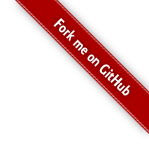UI Tags
Unlike generic tags, UI tags do not provide much control structure or logic. Rather, they are focused on using data, either from your action/value stack or from the Data Tags, and displaying data in rich and reusable HTML. All UI tags are driven by templates and themes . While generic tags simply output some content directly from the tag (if there is any content to output), the UI tags defer to a template, often grouped together as a theme, to do the actual rendering.
Template support allows UI tags to build a rich set of reusable HTML components that can be customized to fit exact requirements. For details, see Themes and Templates.
| Themes and Templates | A must-read explanation of how themes and templates are used when rendering UI tags. |
| Form Tags | provide all form-related UI output, such as form , textfield , and select . |
| Non Form Tags | provide all non-form-related UI output, such as a , div , and tabbedPanel . |
Language Specific Tag Support
The framework strives to support multiple development environments. The framework does not impose a single template language. Almost any common language can be used, and there are hooks for new languages. By default, almost every single tag is supported in JSP, Velocity, and FreeMarker. In each of these sections, you’ll find examples and techniques for applying the generic tag reference toward your specific language or template choice.
Please make sure you have read the Tag Syntax document and understand how tag attribute syntax works.
Within the form tags, there are two classes of tags: the form tag itself, and all other tags, which make up the individual form elements. The behavior of the form tag is different than the elements enclosed within it.
